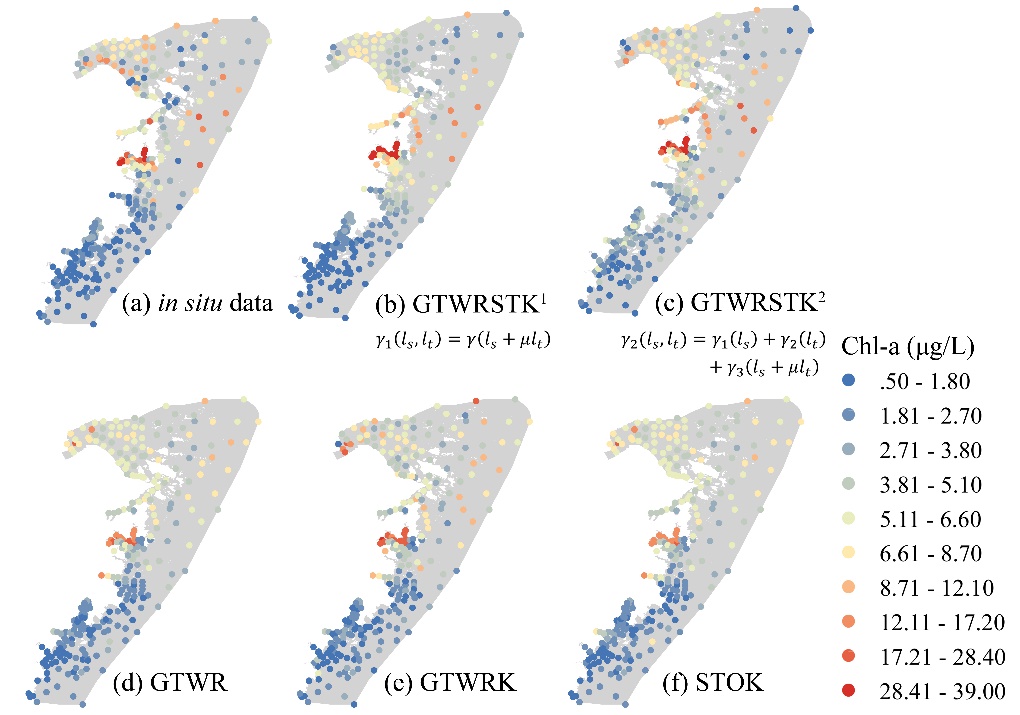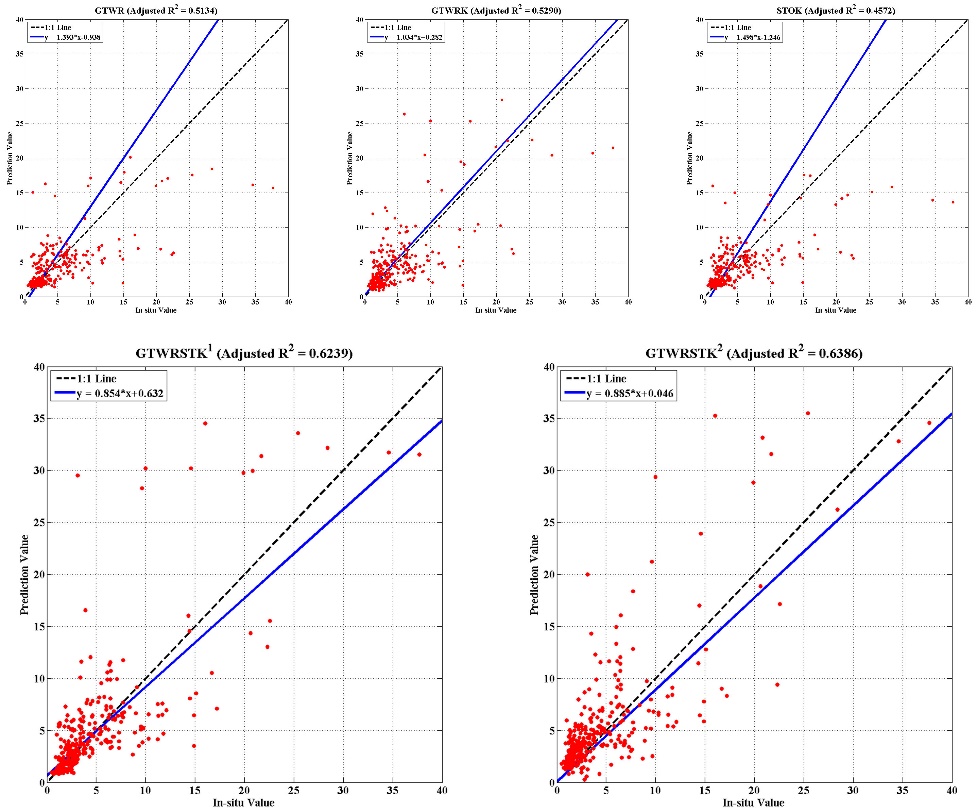Editor: 邵丹蕾 Author: Du Zhenhong Time: 2018-10-16 Number of visits :322
Space-time prediction for areas with no observing stations has witnessed significant progress in geology and geographic information science. Spatiotemporal regression kriging (STRK) is a fundamental space-time prediction method in geo-statistics and widely used in various fields.
To handle the spatiotemporal non-stationary relationship in the trend component of STRK, we recently extended conventional STRK to incorporate it with an improved geographically and temporally weighted regression (I-GTWR) model. A geographically and temporally weighted regression spatiotemporal kriging (GTWR-STK) model was proposed based on the decomposition of deterministic trend and stochastic residual components. From a case study of the coastal areas of Zhejiang, China, the GTWR-STK models generated reliable predicting results that outperformed various spatiotemporal prediction models, as shown in Fig. .

Fig. 1. Prediction results of GTWR, GTWR-K, STOK and GTWR-STK compared with real values.
In the results, the adjusted R2 of the prediction results was improved by the GTWR-STK from 0.4572 (STOK), 0.5134 (GTWR), and 0.5290 (GTWR-K) to 0.6239 and 0.6386 as shown in Fig. . Moreover, all of the values of PME, PMRE, PMAE, PMARE, and PRMSE of GTWR-STK were superior to other models.

Fig. 2. Scatter diagrams of the real values versus the predicted values.
References:
Du,Z.,Wu,S., Kwan,M., Zhang,C.,Zhang,F.,Liu,R.(2018). A spatiotemporal regression kriging model for space-time interpolation: A case study of chlorophyll-a prediction in the coastal areas of Zhejiang, China. International Journal of Geographical Information Science.32(10),1927-1947.
